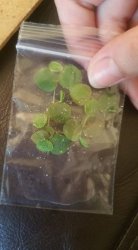So one last newbie question - when I do my water changes, should I continue to use the recommended amount of conditioner or no conditioner? When I brought the tank home I changed about 50% of the water, and added the conditioner - which I believe has been used for water changes so far as came with the tank.
This will not be your last question, never fear.

Water conditioner is necessary if using tap water that has chlorine and/or chloramine added by the water authority. This is the safest way to dechlorinate instantly. If you are using source water like rainwater, RO, or well that does not go through any treatment, you don't need the conditioner, but then there might be other stuff in the water to deal with.
As for the amount, follow the instructions as to how much (1 drop for each "x" gallon/liter or whatever) but only use the amount required for the volume of fresh water being added. There is no need to use more, and in spite of what the manufacturer's will say, it is not all that safe to use more than necessary. Any substance added to the water will get inside fish, and the fewer chemicals the better.
Check what conditioner you have, and check what is in your tap water. Some conditioners add stuff that is either "safe" but not necessary, or in some cases not safe at all long-term.





